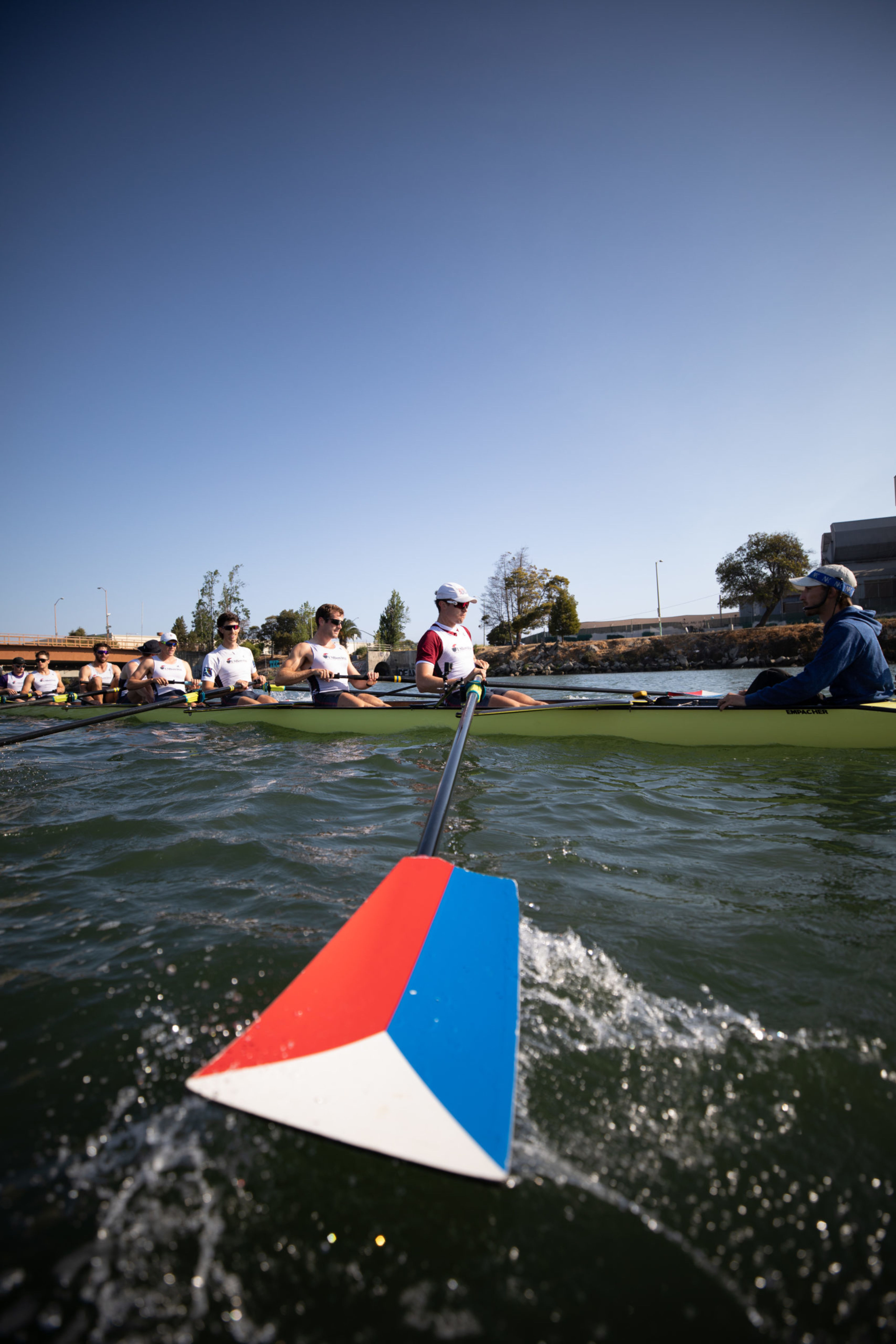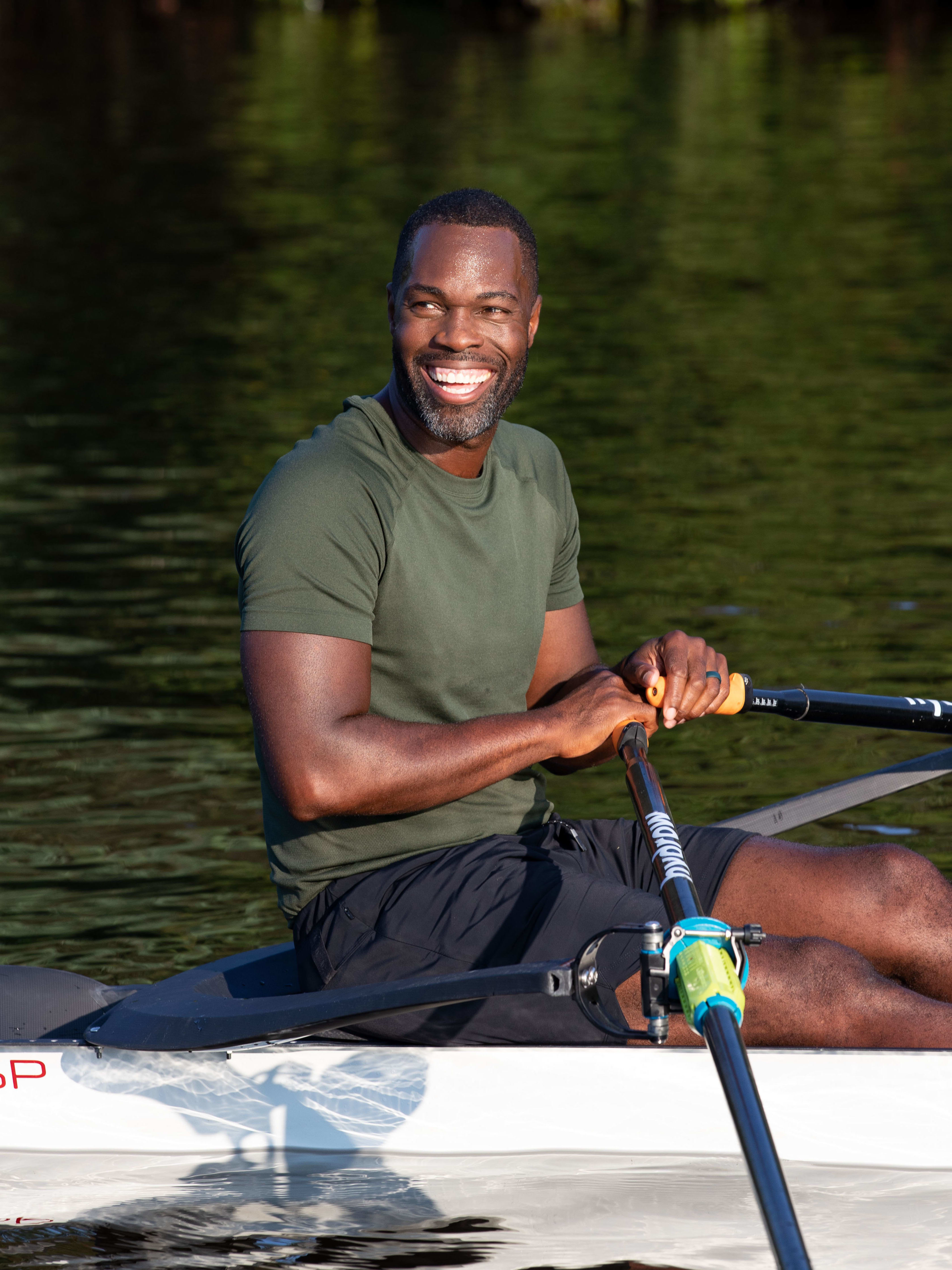Glossary: Hydrow rowing terms

Rowing with Hydrow
In competitive rowing, you'll encounter lots of new terms used within the sport. It's easy to get confused - so we've put together this helpful glossary. Whether you're rowing with Hydrow, out on the water, or watching a rowing event, knowing these terms will help you to feel like an expert!
Our U.S. Rowing Team workouts are available now in the on-demand library, where you can row in tandem with both the Men’s and Women’s U.S. Rowing Team. Listen out for the terms listed here as you’re rowing!
For more information on rowing technique, drills, and understanding terminology on your Hydrow, check out our Personal Coaching videos.
Basic Rowing Terms
8+: 8 person boat plus a cox
4+: 4 person boat plus a cox
Bow: Opposite to what you might expect in a boat normally. The back of the boat for the rowers.
Bow pair: Lighter usually because you don’t want the back weighed down too much. Have to make technical changes in course and at the starting line for coxswain since they can help influence the direction of the boat more than other positions in the boat.
Cox: A cox is essentially your rowing coach on the water, quite similar to how Hydrow Athletes are your coach during a workout. They prepare you, strategise every next move, and help you get the most out of your workout by saving and resourcing your energy on the water. While rowing, the cox knows who to specifically call out for technical adjustments and allows the team to perform as strongly as possible.
Middle Four/engine room (if an 8): Usually your strongest rowers in the boat.
Oarlock: A u-shaped swivel that mounts to the end of the rigger to hold the oar in place.
Pair: Two person boat without a cox. The steering is done through a cable that is connected to one of the rower’s feet.
Port: Opposite to what you might expect in a boat normally. The right side of the boat for the rowers.
Rigger: Mounts to the shell and keeps the oarlock connected.
Run: How long the boat glides through the water (you want this to be as long and uninterrupted as possible).
Sculling: When a rower uses two oars.
Sculls: Refers to one of the oars in the shell, as well as the shell itself in some cases.
Shell: The boat that holds the rowers.
Starboard: Opposite to what you might expect in a boat normally. The left side of the boat for the rowers.
Stern: Opposite to what you might expect in a boat normally. The front of the boat for the rowers.
Stern Pair: These two have to be tight together and set the rhythm for their respective sides of the boat.
Stretcher: Where the rower places their feet, and where their shoes are bolted in the boat.
Stroke seat: Leader of the boat as they set the rhythm. Have to be very collected and not easily phased.
Sweep: Each rower holds one oar.
Understanding the terminology used on the water
When you begin working out with the U.S. Rowing Team, you’ll want to have an understanding of how to transfer the terms the cox uses to your own actions on your Hydrow.
- “Shift forward is horizontal.” Keep your Hydrow handle level throughout both drive phase and the recovery phase of the rowing stroke, rather than letting the hands dip down or arch up.
- “Lengthen.” A phrase commonly used by coxs'. Don’t rush the slide on the recovery - don’t slam into the catch uncontrollably. On the water, this motion could create “check” (driving the boat backwards unintentionally). Hang on the arms (don’t bend or “break” the elbows too early) and make sure you are efficiently making use of each part of the stroke. Drive your legs as long as possible, and as your body begins overlapping at the end of the leg drive, pull your arms in as the body reaches the final layback position to end with a strong finish to the stroke.
- “Weight stays in the seat.”
Your connection to your seat is very important. Find a comfortable spot on the seat, and engage your glutes to really feel that connection.
- “Lengthen one beat.” In rowing speak, this means “lower your rhythm by one s/m.”
- “Glutes all the way through.” Engage glutes at the catch to set yourself up for a strong stroke and not over engage other areas of the body too soon.
- “Push the legs longer” and “long legs.” Drive your legs as long as possible before “opening up your body,” which means pivoting at the hips to begin the “body swing.”
- “Hands around.” Imagine a golf ball floating in front of your sternum. Slightly move the rower handle around the ball when arriving at the finish. Then, begin your recovery back up to the catch.
- “Leave the arms.” Let the arms hang for as long as possible.
- “Push all the way through.” Don’t shorten the stroke. This will allow you to have a stronger finish.
- “Weight in the seat.” Drive your legs horizontally instead of lifting off the rower seat. On the water, this would make the boat off-set and bounce in the water which affects the “run.”



